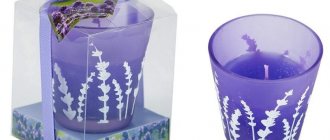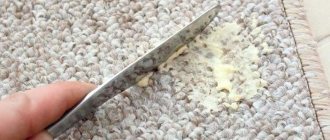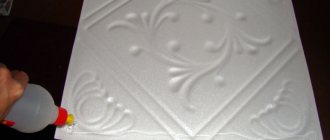What do we dissolve wax in? Almost every person interested in beekeeping products is interested in this issue. Indeed, wax is a complex substance that is soluble in a small amount of liquids. In one of the articles we looked at wax hydrolysis - this topic is also related to our topic today. Today we will talk about what to dissolve beeswax in and how to do it correctly. Several unexpected liquids for dissolving wax - read the next article on.
Thermal properties
In its natural form, wax occurs in a solid state. The material becomes plastic at temperatures above 35 degrees. There are many options for dissolving wax. This is not a problem, because when cooled it returns to a solid state.
A temperature of 60–80 degrees is sufficient to turn the wax into liquid. At 100 degrees, the wax boils and foam appears on the surface of the molten liquid. This way the substance gets rid of water, which is naturally present in the structure of the material.
Temperatures above the boiling level bring the wax to destruction, which is why some of its elements begin to break down. This means that if the wax is dissolved to such a state, the material will no longer be able to return to its original form. Wax begins to burn at temperatures above 300 degrees.
Methods
At home, melting paraffin in a water bath is the easiest way. It can be applied anywhere. Having previously crushed the material, pour it into a small container. We place the container in another bowl with water, of a larger diameter, water, in a larger diameter bowl, bring it to a boil, continuously stir the petroleum wax. The process takes 7-10 minutes. You can strain the raw materials.
In the microwave
Every home has a microwave. Melting paraffin with such a device is not difficult. Place finely chopped pieces of material in a bowl designed for microwaves and turn on the desired mode. It is better to cover the container with wax with a cloth, there may be splashes. A steamer is also a good option. Pour some water into the bottom of the steamer, put paraffin into a heat-resistant dish, and set the timer to no higher than 100 degrees.
On alcohol
Petroleum wax does not dissolve well in cold alcohol. To prepare the mixture at home, heat the alcohol and paraffin, mix, and heat again over very low heat. Bring the liquid to a uniform shape. You can fill the raw material with chloroform and let it sit for several hours. The principle of cooking with turpentine is the same as when cooking with alcohol. The only difference is that turpentine must be added gradually and in small portions.
In gasoline
The first method: take three parts paraffin and one part gasoline. We cut the purified wax into small pieces and pour it into a special bowl. Fill with gasoline until the paraffin disappears. Infuse the mixture for two days. Second option: cut the product into the smallest pieces, place it in a water bath preheated to 70 Gy. When the paraffin begins to melt, carefully pour in gasoline in small portions. Mix the finished mixture well and close tightly.
Prepared mixtures based on alcohol and turpentine can be used for medicinal purposes. It helps well with pain in the limbs, in cosmetics, overseas new products can easily replace it. According to all the rules, the prepared composition using gasoline is suitable for polishing furniture. It would be a good idea to polish your car with a mixture of gasoline. It will shine like new. The main thing is to follow fire safety rules when preparing mixtures with sparta and gasoline. take care of yourself
Chemical features
The material is insoluble in water and glycerin. Its solubility in alcohol is also low, so before dissolving the wax, you need to prepare the necessary ingredients for this process.
To ensure good dissolution of the substance, you will need heated essential oils: paraffin, turpentine, gasoline, chloroform or ether. Each of these elements at a certain temperature begins to affect the wax and dissolve it.
They also recommend using heated alcohol. But here you need to be careful, before dissolving the wax using this method, you need to check its naturalness. If there are no additional substances in the composition, the material will dissolve quickly. If there are other elements there, this can lead to the destruction of the components of the substance, as well as the impossibility of returning to its original state.
Mechanical cleaning
Mechanical cleaning helps remove wax deposits, drops and upper, bulky layers. Carry out this method only after the wax texture has hardened and there is no risk of increasing the area of contamination. In mechanical cleaning, accuracy and leisurely movements are important.
Do not tug or tear out the candle substance from the fibers of the material.
Scraping
Scraping is useful for removing hardened candle wax from the surface of the material. To do this, use a thin object with a dull surface or blade, for example, a nail file, knife, plastic card, or cream spatula.
Any available tool without sharp edges that can damage the threads of clothing will do.
Gently pry up the hard wax bead at the base and remove it from the fabric. In especially difficult cases, you will have to remove the paraffin layer by layer, carefully removing shavings and wax residues. Depending on the surface, grease stains can be removed using any chosen method.
Steam treatment
Removing wax using steam is suitable for suede surfaces or thick fabrics. The method requires caution, as it is easy to smear hot wax on the fabric. Pour water into a kettle or saucepan and boil. Pull the cloth over the boiling liquid so that the steam passes through the fibers of the contaminated area. Blot drops of fat that appear under the influence of steam with a napkin until the area is completely clean.
You can try to carefully remove heated fat deposits from suede with a special brush.
Heat with iron and hairdryer
The method of heating a candle stain with an iron or hairdryer is suitable for stains made of natural and unpainted wax. Any extraneous dye present in the colored wax will be completely absorbed into the fabric when heated strongly. It is almost impossible to remove such a stain.
It is better to remove wax from such clothes with a hairdryer, since hot air is safer.
Heating can completely separate the wax from the fabric if all the rules are followed:
- If the iron has a steam function, turn it off. Only heating of the surface should be carried out without moistening.
- Before heating, clean the stain as much as possible from the paraffin layer and shavings. Be especially careful to remove wax crumbs, which are invisible but can leave additional stains when heated.
- You should have everything at hand: a thick layer of cardboard so that the greasy layer does not leak onto the other side of the clothing, paper napkins or towels, an iron or hair dryer, additional cotton fabric.
- Preheat the iron or turn on the hairdryer. Follow the temperature recommended for your fabric type.
- Place a protective layer of thick cardboard and several layers of napkin under the stain. Also place a couple of napkins or towels on the fabric. Lay a piece of cotton fabric on top and iron it with an iron. Or warm it up with a hairdryer.
- As soon as the napkin or towel has absorbed a sufficient amount of wax, the paper layers must be replaced with new ones. They perfectly absorb both wax and fat.
- Wash the item according to the instructions on the tag.
After this, just wash the item in warm soapy water and rinse thoroughly.
Freezing
The method of removing wax by freezing is suitable for silk, leather, denim and fur products, when there is a high probability of damaging the color or texture of the material. There are several ways to quickly cool something:
- take the item out onto the balcony or hang it in the fresh air if you live in a region with a cold climate;
- attach a piece of ice wrapped in foil or cellophane so as not to wet the item;
- place the item in the freezer or refrigerator for a while.
You can also place ice in a plastic bag on the wax stain for 30-40 minutes.
With rapid cooling, the spark plug solidifies and is easily removed from the surface. Sometimes the wax build-up can be removed with your fingernails or a fine-tooth comb if it is long hair or fur.
Substance classification
There are several types of wax, each of which has its own advantages. The most popular options are:
- Kapanets wax, which does not contain emulsified water, which makes the material quite durable and hard. Melting point is higher than regular wax. It has good characteristics in purity, color and quality. Used for making medicines. There are few options for dissolving natural wax of this type; in this case, the use of essential oils would be optimal.
- Beeswax is from the category of ordinary beeswax. It is used for making foundation and in the food industry. The material is more plastic and melts faster.
- Wax obtained by processing apiary merva at high temperatures. The primary qualities of the wax are lost, which is reflected in a cloudy color and uneven texture. Can be used as a material for creating foundation. It is not difficult to dissolve the wax to a liquid state; you need to heat it to a temperature of 60 degrees.
- Extraction wax is obtained by processing raw materials and extracting the main component. Gasoline may be used in the process. This wax can only be used for industrial purposes.
The choice of wax determines in which industry the material will be used. This is worth considering, as well as the technical characteristics of each type.
Background of creation
Wax is considered one of the mass products in beekeeping, which is also actively used in agriculture. Bees accumulate wax during their life processes. Over time, the walls of the honeycomb begin to darken, the cells become smaller, and enough of this substance appears on the surface to be released.
By the darkness of the honeycomb, you can determine the quality of the wax and the presence of additional substances and elements inside. During the process of material release, the proportion of wax is minimal. Although it depends on how to dissolve the wax and what methods are used for this.
Pure beeswax can be obtained by melting down the wax-containing material and further filtering it. On an industrial scale, this is done quite easily thanks to special filters. In agriculture, such purification is carried out only by numerous meltings.
Primary raw materials
Before wondering how to dissolve the wax to a liquid state, you need to think about what to use as the primary raw material. These can be wax trimmings that are collected after trimming honeycombs in apiaries. The honeycombs themselves are also used, which are already full and difficult to clean.
By cleaning, you can get about 70 percent of the wax from the total mass on the comb. It is used for melting both the bar and the waxy material from the honeycomb that remains on the surface after eating honey.
How to remove an old stain
The good thing about wax stains is that they can be removed at any time. However, do not allow fatty residues to become firmly embedded in the fabric. Long-standing greasy stains with a new adhering layer of dust are especially difficult to remove. The stain becomes complex, since in addition to grease, ingrained dirt and other components are added here. In such cases, a combined method of removing dirt helps, for example, heating it with an iron and removing the residue with a stain remover. Or take the item to the dry cleaner.
It is not always possible to remove old wax marks when an item has been lying in a closet without leaving a trace, but it is worth a try.
Dealing with wax stains is not difficult if you react in time and take the right actions. Don't give in to your first impulse to wipe the liquid wax off your clothes. Act wisely and thoughtfully. And no stains are scary for your favorite clothes.
Recycling options
The most popular option is the solar wax melter, which produces a high-quality product. This is a good option. And is the answer to how you can dissolve wax to a liquid state. Thanks to sunlight, it quickly clarifies and natural filtration occurs. Steam wax melting is gaining popularity, but interaction with water can negatively affect the concentration of the product itself.
How to dissolve wax or paraffin? This can be done using water melting, due to which, as a result, most of the filtered wax floats to the surface, from where it is immediately collected. The advantage of the method is that in the end it is obtained in a plastic state, and it is easy to give it the desired shape until it cools completely.
How much does 1 kg of paraffin cost?
Price list
| № | Name | Price |
| 3. | Refined solid petroleum paraffin (STO 00148636-004-2007) | negotiable |
| 4. | Solid petroleum paraffin, grade T-2 (GOST 23683-89 with amendment 1), original packaging | 72.5 rub/kg |
| 5. | Solid petroleum paraffin, grade T-2 (GOST 23683-89 with amendment 1) | 72.0 rub/kg |
| 6. | Petroleum match paraffin Ns (TU 38.1011322-90) | 57 rub/kg |











